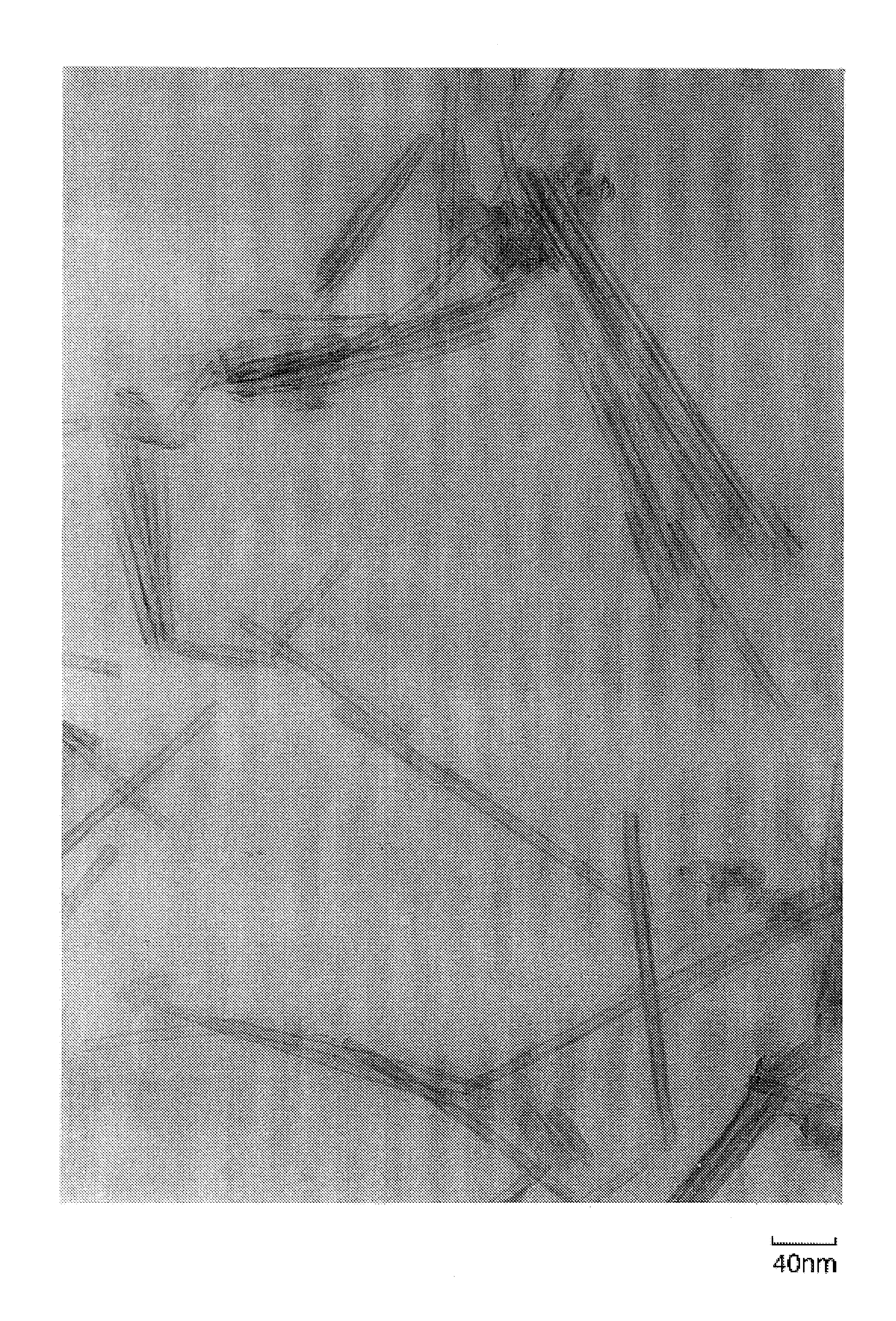Tubular titanium oxide particles and process for preparing same
a technology of titanium oxide and tubular crystalline titania, which is applied in the field of tubular titanium oxide particles, can solve the problems of low yield of nano-tubular crystalline titania, inability to obtain sufficient performance of catalysts, catalyst carriers, photocatalysts or the like, and inability to exhibit performance at all
- Summary
- Abstract
- Description
- Claims
- Application Information
AI Technical Summary
Benefits of technology
Problems solved by technology
Method used
Image
Examples
examples
[0232]The present invention is further described with reference to the following examples, but it should be construed that the invention is in no way limited to those examples.
example a1
Preparation of Titanium Oxide Particle (T-1) Dispersion
[0233]A titanium chloride aqueous solution was diluted with pure water to prepare a titanium chloride aqueous solution having a concentration (in terms of TiO2, referred to as “TiO2 concentration” hereinafter) of 5% by weight. The aqueous solution was added to ammonia water having a concentration of 15% by weight and having been controlled to a temperature of 5° C. to perform neutralization and hydrolysis. After the addition of the titanium chloride aqueous solution, the resulting gel had pH of 10.5. Then, the gel was washed by filtration to obtain a gel of orthotitanic acid having a TiO2 concentration of 9% by weight.
[0234]Thereafter, 100 g of the gel of orthotitanic acid was dispersed in 2900 g of pure water, then 800 g of hydrogen peroxide water having a concentration of 35% by weight was added, and with stirring, the mixture was heated at 85° C. for 3 hours to prepare a peroxotitanic acid aqueous solution. The peroxotitanic ...
example a2
Preparation of Tubular Titanium Oxide Particles (PT-1-2)
[0244]To a water dispersion (TiO2 concentration: 5% by weight) of the tubular titanium oxide particles (PT) obtained in Example A1, tetramethylammonium hydroxide was added as an organic base in such an amount that the molar ratio of TMAH to TiO2 became 0.1. The resulting dispersion had pH of 13.2. Then, the dispersion was subjected to hydrothermal treatment at 190° C. for 5 hours to prepare tubular titanium oxide particles (PT-1-2). The resulting tubular titanium oxide particles (PT-1-2) were washed with water and dried. Then, alkali was analyzed, and a TEM photograph of the particles was taken to determine an average particle length (L), an average tube outer diameter (Dout) and an average tube inner diameter (Din). Further, specific surface area of the particles and the crystalline state thereof were evaluated. The results are set forth in Table 1.
PUM
| Property | Measurement | Unit |
|---|---|---|
| particle diameter | aaaaa | aaaaa |
| length | aaaaa | aaaaa |
| thickness | aaaaa | aaaaa |
Abstract
Description
Claims
Application Information
 Login to View More
Login to View More - R&D
- Intellectual Property
- Life Sciences
- Materials
- Tech Scout
- Unparalleled Data Quality
- Higher Quality Content
- 60% Fewer Hallucinations
Browse by: Latest US Patents, China's latest patents, Technical Efficacy Thesaurus, Application Domain, Technology Topic, Popular Technical Reports.
© 2025 PatSnap. All rights reserved.Legal|Privacy policy|Modern Slavery Act Transparency Statement|Sitemap|About US| Contact US: help@patsnap.com



